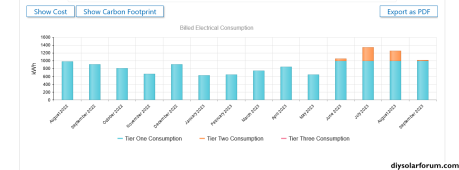@rebellyellsolar
You would gain the "cost savings" in electricity by simply using the window unit, even without the GTIL or solar panels.
You are going to end up backfeeding / exporting briefly every time your AC unit ends its cycle. Whether they will notice and beat down your door or not, I don't know.
The only way to run a GTIL and not get caught if exporting isn't allowed is to never generate more than you are using.
Do you have any idea what your minimum electrical load, your base load is? If not, might I suggest hooking up something like an Emporia Vue 2 (which are allowed, even by inspectors). Once you know your base load, you can determine if one GTIL, a few panels, a small MPPT and a 24v battery is something to get or not.
Alternatively, what others suggest is the way to go.. get an inverter, that can run with solar and ac with no batteries, hook up some panels to it and your ac unit. Whatever the panels don't supply, your existing AC service will provide with no fear of backfeeding / exporting. They are more expensive than the GTIL I mentioned, and they can't offset any loads that aren't connected directly beneath them. There are a few out there that can do this, but I don't have any to recommend personally.
You could also use a mini split, and instead of drilling through the walls, just run the cables through a small insert through the window. There are mini splits available that do ac/solar power, like the EG4.
I just don't like wasting solar panels output. Having them connected directly to a load that doesn't use their full output every second they are producing during the day is going to result in some of their ability being wasted compared to an MPPT/battery. Some people on the forum are cool with that, with overpaneling in general, but I'm not one of them.




